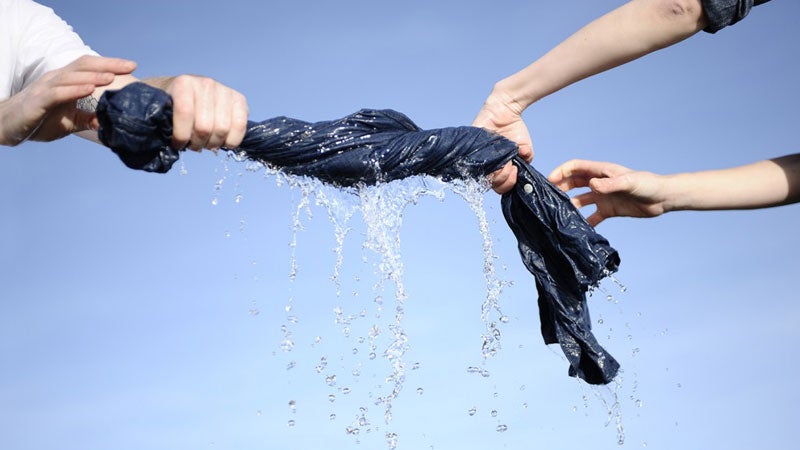Levi’s is testing that has already saved 12 million liters of water—enough to fill five Olympic-sized swimming pools.
Back in the 1850s when Levi Strauss started making blue jeans for California gold miners, no one paid any attention to how much water they used, nor what toxins might wash down the river in the pursuit of that precious metal. As a result, the San Francisco Bay still receives mercury-laced sediment flowing from mining sites in the Sierra Nevada foothills.
Since 1992, however, Levi Strauss & Co.’s has been making concerted efforts to reduce the harmful elements in its wastewater, and to cut the amount of fresh water it consumes in manufacturing. In 2010, it launched “Water Last month the company announced it had begun testing a new system at a factory in China. Water is treated and recycled on site, and then reused in the finishing process. It has made 100,000 pairs of women’s jeans using the new process, but has plans to scale the process out to other locations. Levis is also working to so that other manufacturers might follow it. As Gilbert O’Neal, president of the , points out in , there is a difference between jeans made with 100-percent recycled water and actually recycling all of the water used in a manufacturing process. In other words, it’s not a closed-loop system; a portion of the water is discharged from the factory. But closing the loop is the ultimate goal. The , which includes Patagonia, The North Face, REI, and others in the outdoor industry, is developing standards for reducing water consumption and finding ways to reuse the resource throughout the supply chain. Late last year, a company called Xeros, which has developed a low-water laundering technology, joined the Sustainable Apparel Coalition and is helping the group developed water-efficient manufacturing processes. Back in 2012 I spoke with Peter Waeber, CEO of Bluesign, an agency that audits chemical use and checks up on worker safety at textile factories, about the work it had done with The North Face. He told me that when major brands want to change their manufacturing processes, it has a multiplier effect. “Normally a textile mill works for multiple brands, so if The North Face can get a process changed, then all the other brands benefit from that,” he said. If a small brand pushes its factories to reduce water consumption or find ways to reuse water, the mill probably won’t budge. Waeber says Bluesign works with many outdoor brands because their apparel lines are among the most chemical-intensive products, including “nanotech, membranes, and all this stuff you can find in the outdoor sports industry,” he said. That technology consumes water, and research shows that nanoparticles are widely dispersed into the environment. Using less water is an worthy and important step, but so is better understanding what comes out in the wash.


